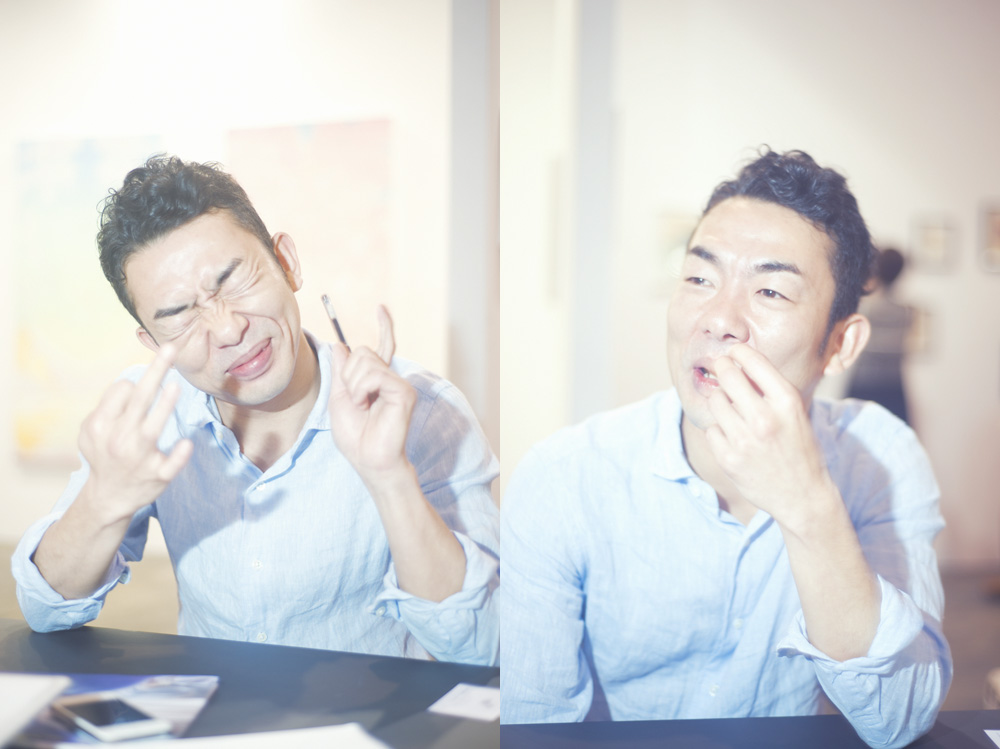
Interview/Written by : Johannes Pong
Translation : Jin Tao
Photography : Nick D for precursorprints.com
Special Thanks : Ms. Junko Shimada
Takeo Hanazawa paints and sculpts. East and West, past and present, classical and contemporary all amalgamate into a gloriously neat hybrid in his works. 13th century European pottery, 18th century Japanese composition, characters from traditional Asian mythology (kappa river-sprites; Chinese taoist immortal sennin) as well as modern legends (Chewbacca; Kermit the Frog; Funkadelic pop icons) co-exists cleverly in his pieces. For him, these pose not as opposites in duality, but rather as concepts with underlying similarities. It’s an assessment of his own cultural cache as well as a whimsical homage to what history has wrought. This respectful irreverence to both traditional and contemporary artistry has prompted commissions from musicians like Lily Allen for their own private pleasure, and also collaborations with fashion houses like Alexander McQueen’s latest Tokyo flagship in Aoyama.
Johannes Pong sits down with the artist at Art Basel Hong Kong and has a chat with him in Japanese.
<< Continued after the Chinese below >>
花泽武夫绘画与雕塑作品,将东方与西方,过去与现在,传统与现代这些两极化的东西混合成为了协调的一体。 他的作品包罗万象,13世纪的欧洲瓷艺,18世纪的日本构图,传统的亚洲神话人物(日本河童;中国道教神仙)到现代传奇(巴卡,青蛙柯密特; 疯克德里克流行音乐形象)无不在他的作品中巧妙地找到了共生的办法。对他而言,这些看似二元对立的事物事实上都具有潜在的相似性概念。这不仅是他对自己的文化修养的评估,更是他对于历史异想天开式的致敬。这种无关传统或现代艺术的敬意,使他赢得了来自像Lily Allen这样音乐家的个人委托项目,以及来自时装屋Alexander McQueen的最新东京青山旗舰店这样的合作项目。
今年五月初,Johannes Pong有幸与这位艺术家面对面坐在香港巴塞尔艺术展,用日语一叙事业与梦想。
Johannes:你第一个梦想的职业是什么?
花泽武夫:我曾经想成为一名厨师,因为我想每天都吃到好吃的食物。那时我还在小学,我的梦想就是吃好吃的,什么都想吃。
Johannes:我上周刚刚采访了一位日本厨师,有趣的是他说他儿时想成为艺术家。
花泽武夫:真的吗?哈哈(大笑)。
Johannes:其实厨师也是艺术家,他们每天都在进行艺术创作,可食用的艺术品。
花泽武夫:但是对我而言,我觉得我真得做不到日复一日地做同一道菜,那样我真的会很无聊。再加上厨艺训练过程也十分辛苦。如果我得到一颗米其林星,保持这颗星所承受的压力难以想象。所以很快我又有了另一个梦想。
Johannes:你的艺术生涯是什么时候开始的?
花泽武夫:整个大学时代我都是村上隆的助手(多摩美术大学,BFA)。所以我每天的行程都是他的工作室而不是教室。哦,其实我还学了踢拳。
Johannes:嗯,的确内什么,你的身材不错。
花泽武夫:嗯,我一直很喜欢看踢拳。我的住所不远处就有一所踢拳会馆,好奇所致,我便前去一探究竟,而很快地,我就迷上了踢拳,其实在我快30岁的时候已经是职业踢拳手了。但我做职业踢拳手的时候就没有画画了。所以,作为一个艺术家,我出道算比较晚的,30多岁的时候才出道。其实你的工作就我梦寐以求的那种。我喜欢免费旅游,还能吃到大餐。
Johannes:作为一个食物旅游写手我真得不应该抱怨什么。但老实说,你的工作才是我我梦寐以求的!说不定我现在出道还不算太晚。
花泽武夫:永远不会太晚。人的一生都可以进行艺术创作。
Johannes:那么你最喜欢的媒介是什么?
花泽武夫:对我来说绘画是最简单的。我擅于并喜爱运用颜色。
Johannes:你认为绘画与跆拳道是否存在某种共通之处?
花泽武夫:是的,我的确这么想。我用我的意志控制着我的身体,作画的时候也是一样的吧?如果我太性急,效果不会很理想。所以必须保持冷静,才能创造出优秀的作品。
Johannes:那么你的灵感从何而来呢?
花泽武夫:我从一切事物中汲取灵感。比如艺术史,音乐等…
Johannes:疯克音乐是你的主要缪斯之一么?能够发现,其实你用了很多的歌曲名称作为你艺术作品的标题,像Lee Perry,Roy Ayers,Mothership。
花泽武夫:他们是我最喜欢的艺术家。有时候,我一边听音乐一边创作,而有时我在安静中创作。一开始我基本只听电子和嘻哈,之后又发现了疯克。再后来我又回到爵士乐,我喜欢爵士乐,我想我是基本上都是从比较现代的音乐形式追溯回它们的根源。对艺术亦是一样。我喜欢追根溯源。要知道,任何文化的传统艺术使用的技艺与主题都十分美丽,而我又将现代的东西混了进去。如果你只是照搬古代大师的东西,那不算是创作。所有创作之后都有其深远意义的。照搬岂不是很无聊?比如我创作的那个系列肖像(Jittoku,Kanzan,Tekkai,Gama)- 是搭嘻哈疯克音乐与过去日本经典意象中的仙人(中国道家的隐士和圣人)的混搭,还有有青蛙。我觉得这看上去挺酷的。
Johannes:你喜欢青蛙吗?
花泽武夫:我喜欢青蛙。我经常画青蛙。还收集了很多奇异的青蛙物件。
Johannes:你可以在猫街上买到风水用的三脚蟾蜍,就在上环附近的荷里活大道上。那儿很值得一逛。
花泽武夫:哦,你是说嘴里叼着硬币的青蛙?是的,我一定要在这儿买一只回去。
Johannes:对自己的作品,第一次感觉到,“哦,就是它了!”是什么时候?
花泽武夫:还没有呢。我对自己的创作还从未有过那样的感觉。所以,我还不能死呢。
Johannes:你又是怎样得到为新McQueen青山旗舰设计装置的委托的?
花泽武夫:去年夏天我在福岛的塞尚展工作,并见到了高尾富樫。我们俩一拍即合,决定一起做一些什么。
Johannes:我听说McQueen的创意总监Sarah Burton想在他们的东京旗舰店内放置一些非常独特,非常“日本”的东西。
花泽武夫:是的,所以我们的装置(楼梯中间的天花板垂下的吊灯状结构,有葫芦,鲶鱼,头骨和贝壳碎片悬浮雕刻)灵感源于15世纪水墨画“瓢鲇图”(日本国宝“葫芦和鲶鱼”)。几个世纪以来,禅宗僧侣一直在探究并试图解答的个案:“你能够用葫芦捕捉鲶鱼吗?”几个世纪以来,在传统的神话中,一条巨型鲶鱼在日本地下扭动造成了地震。停止地震的方法是将石头压在它上面。这是福岛的一件艺术品。我个人认为它很酷。
Johannes:你喜欢时尚吗?
花泽武夫:我并不赶时髦,但是……我喜欢色彩。
Johannes:你怎么看待时尚品牌与艺术家之间的跨刀合作?
花泽武夫:我以前从没觉得这工作有多好玩,但现在我想我明白了。艺术其实是慢慢渗透进人们的集体意识的;而时尚是迅速猛烈的。时尚瞬息万变,大概不到半年就要更迭一次?它太过大众化,它尖叫着:“这就是这个季节该有的包!”而这种力量主宰了群众的主题意识。我现在深刻体会到了这种无形的力量。
< < English continues below >>
Johannes: What was your first dream job?
Takeo: I wanted to be a chef because I wanted to eat really good food every day. That was in elementary school. I enjoy good food. I love to eat everything.
J: I just interviewed a Japanese chef last week, and he said he wanted to be an artist when he was a kid.
T: Oh really? LOL.
J: Well a chef is an artist, I mean, they create art daily, art that is edible.
T: But for me, I thought there was no way I could make the same dish over and over again everyday. I’d be really bored. Plus the training is really hard. And then if I get a Michelin star, there would be a lot of pressure to keep it. I got a new dream really quick.
J: So when did you start your career in art?
T: I was Murakami Takashi’s assistant for the whole time I was in university (Tama Art University, BFA). Instead of going to my classes, I went to his studio everyday. Oh and then I did kickboxing.
J: Uh what? Oh yeah, you have quite a ripped body.
T: Well, I’ve always enjoyed watching kickboxing. Then a kickboxing gym opened near where I lived, so I went to check it out. And then I was hooked. I was actually a pro kick-boxer in my late 20s. But I did not paint when I was a kick-boxer. So yeah, I debuted really late as an artist, in my 30s. Actually your job is my dream job. I’d love to travel and eat everywhere for free.
J: I can’t complain being a food and travel writer. But no, you have my dream job! Perhaps I can still debut as an artist.
T: It’s never too late. You have your whole lifetime for creating art.
J: What’s your favourite medium?
T: Painting is the easiest for me. I like using colour.
J: Do you think painting has a correlation with kickboxing?
T: Yeah, I think so. I’m using my mind to move my body. It’s the same as when I’m painting, right? And at that moment, if I get too hotheaded, it won’t be good. You have to keep your cool to do the best work.
J: What’s inspires you?
T: I get inspiration from everything. Art history, music…
J: Is funk a major muse? We’ve noticed that you use a lot of song titles as the titles your paintings, like Lee Perry, Roy Ayers, Mothership.
T: They’re my favourite artists. Sometimes I paint when I listen to music, sometimes I do it in silence. I started with techno and hip-hop, and then I discovered funk. And then i went further back to jazz. I love jazz. I think I was basically going from more contemporary forms of music back to its ancestral roots. It’s the same with art. I like to dig for the roots. You know, the techniques and themes of traditional art from any culture is very beautiful, but I like mixing it up with something contemporary. If you’re just copying the old masters, there’s nothing new being produced. There’s meaning behind it. Isn’t that boring? Like, that series of portraits (Jittoku, Kanzan, Tekkai, Gama) I did — it’s a mash-up of hip-hop and funk musicians with the classic Japanese iconography of sennin (Chinese Taoist hermits and saints) from the past, you know, um, with frogs. I thought that was pretty cool.
J: Do you like frogs.
T: I love frogs. I draw frogs a lot. I’ve collected a lot of weird frog objets.
J: You can get three-legged toads for feng-shui on Cats Street, around Hollywood Road in Sheung Wan. That’s a cool hood to walk around.
T: Oh the ones with a coin in their mouths? Yeah, I must buy one here.
J: When was the first time you felt, “Oh this is it!” in regards to your own work?
T: Not yet. I have yet to feel that from a piece of work. Yeah, I can’t die yet.
J: And how did you get commissioned to do an installation at the new McQueen flagship in Aoyama?
T: I was working on a Paul Cézanne exhibition in Fukushima last summer, and met Takao Togashi. We both hit it off, and decided to do something together.
J: I heard that McQueen’s creative director Sarah Burton wanted something unique and very “Japanese” in their Tokyo flagship store.
T: Yeah, so our installation (a chandelier-like structure hanging down the centre of the staircase from the ceiling, with suspended sculptures of gourds, catfish, skulls and shell fragments) is inspired by the 15th century ink painting “Hyōnenzu” (“Gourd and Catfish”, a Japanese national treasure). For centuries, zen monks have been asking and trying to answer the kōan: “Can you catch a catfish with a gourd?” for centuries. In traditional mythology, a giant catfish wriggling under Japan causes earthquakes. If a stone is placed on top of it, the earthquakes will stop. It’s a piece of art for Fukushima. I think it’s really cool.
J: Do you like fashion?
T: I’m not fashionable, but… I like colours.
J: What do you think of fashion houses commissioning artists to do collaborations with them?
T: Yeah, I didn’t think it was that interesting before, but now I think I understand. Fine art is slow to penetrate into the collective consciousness of the people; fashion is violently swift. It’s changing all the time, what, every half a year? It’s terribly pop. It’s screaming: “This is the bag for this season!” and that’s shoved into the collective consciousness of the masses with such force. I do understand its power now.
Takeo Hanazawa is represented by the good people at GALLERY SIDE 2, Tokyo, Japan.
You can see his work at : www.galleryside2.net // www.facebook.com/GALLERYSIDE2
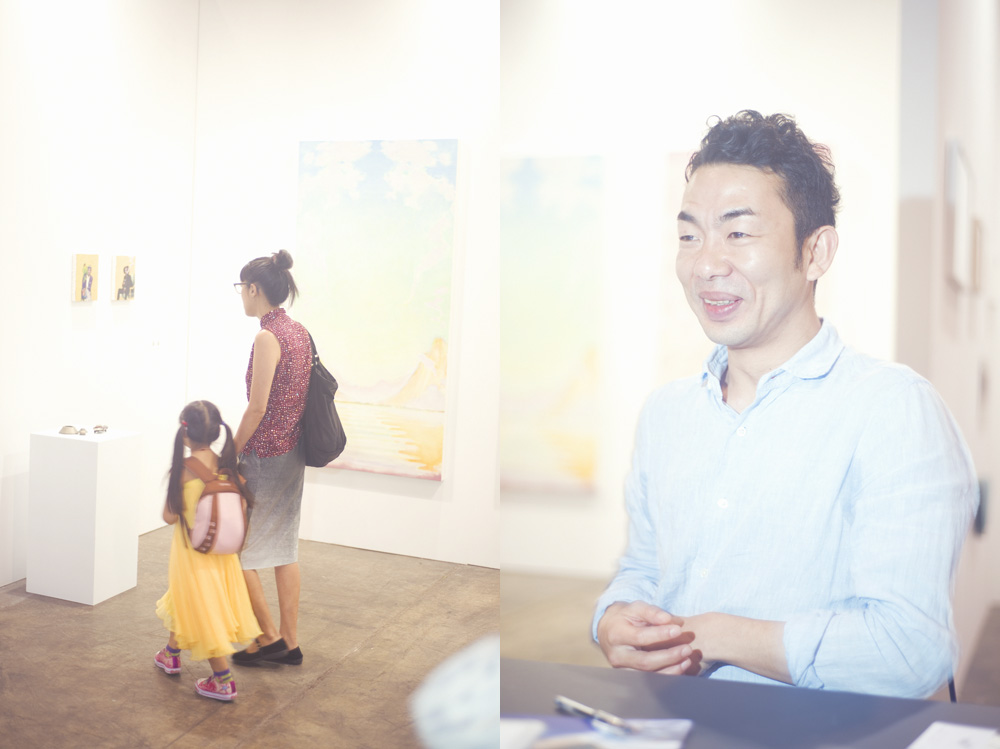
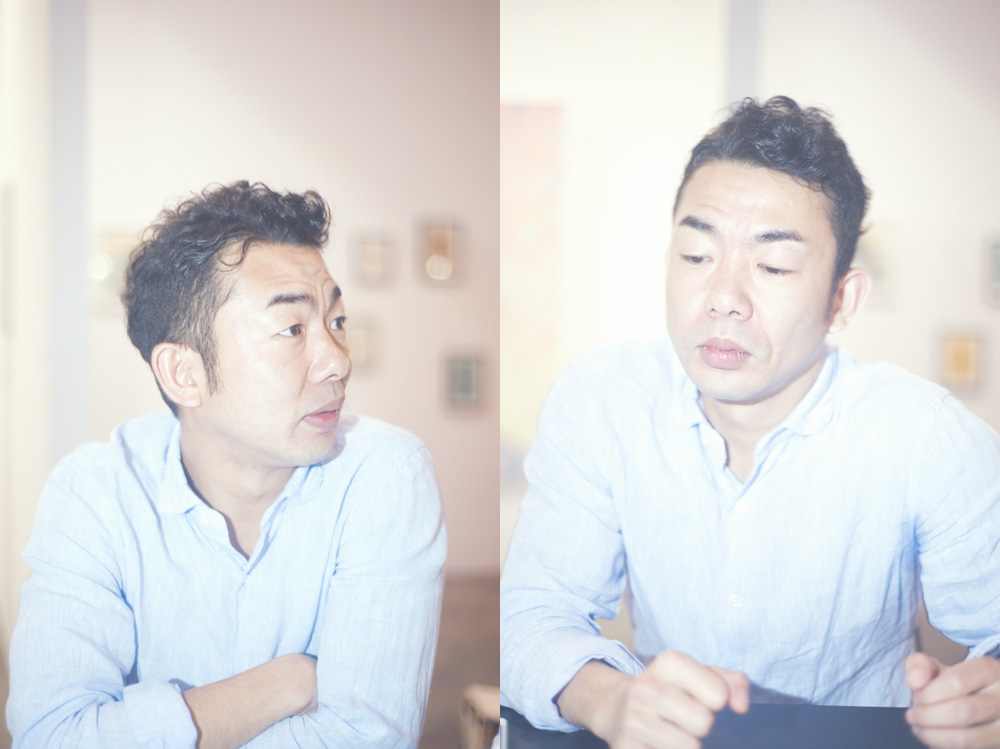
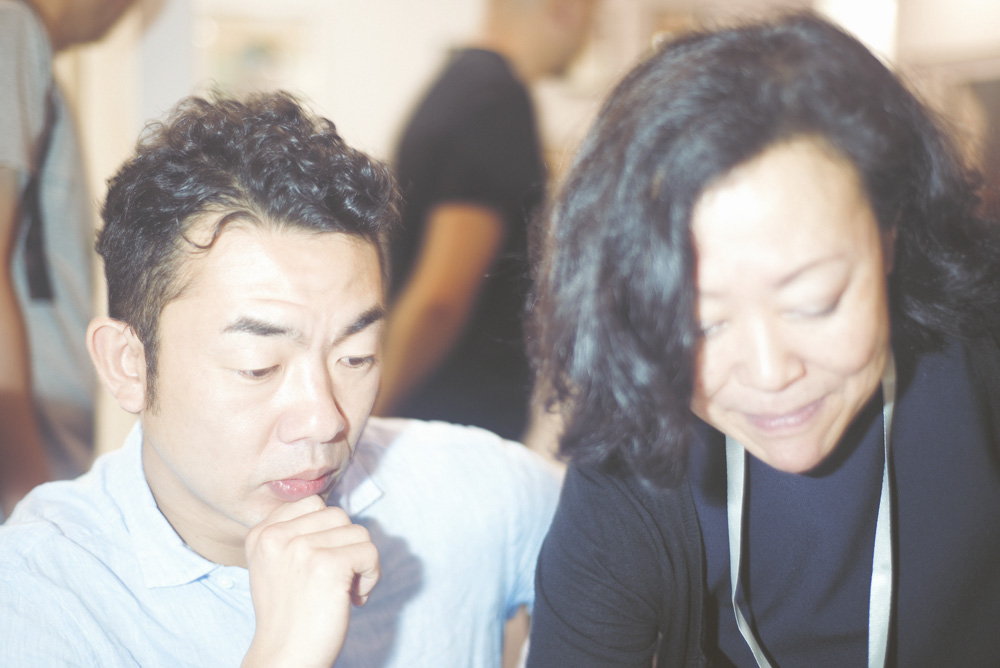

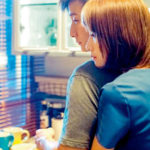
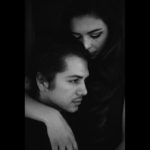
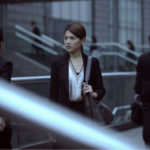
Speak Your Mind